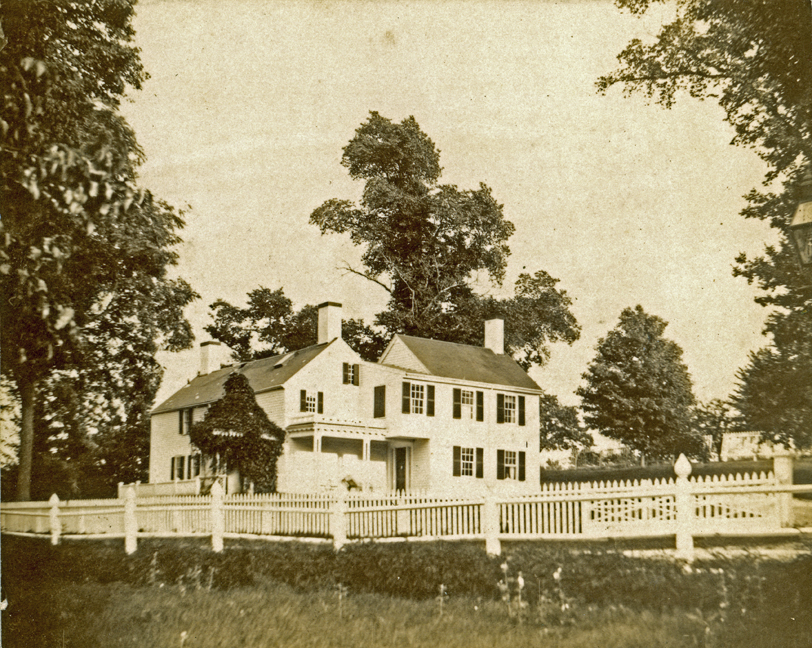
Samuel S. Pierce, the son of Daniel and Lydia Davenport Pierce, was born in the farmhouse owned by his family in what is now the Cedar Grove section of Dorchester. The house appears to have been built in the 18th century, although there is no documentation to provide an exact date. Samuel’s father was a cabinetmaker. At an early age, Samuel worked for a firm of importers in Boston, then went into the grocery business for himself. In 1831, he started his own grocery store, specializing in products for the well-to-do in Boston. The firm of S. S. Pierce became widely known for catering to the cosmopolitan tastes of Boston residents and for introducing new foods to the market.
Pierce maintained a home on Union Park and the family homestead in Dorchester, both homes appearing in the Boston Directory.
Samuel married Ellen Maria Theresa Wallis in 1836, and they had eight children. The family lived in Boston during the winters and summered at the family house he owned in Dorchester. According to Anthony Sammarco, the house was enlarged after the Civil War to accommodate his family. It stood on a knoll overlooking both Adams Village and and the Neponset River. The estate comprised a house and stable, with ten acres and marshland. Samuel Stillman Pierce died in 1880, and his son Wallis Lincoln Pierce continued the trademark name and standards established by his father. The family included Samuel S. Pierce, Jr., who died as a young man in California, Dr. M. Vassar Pierce, a noted physician in Milton, and Holden White Pierce, who took over management of the Back Bay store of the S.S. Pierce Company. They maintained their connection to Dorchester through their sister, Henrietta Pierce, who still summered in the family home. By the time of World War I, the Pierce homestead was a rambling series of additions made over the years.
Henrietta M. Pierce died in 1920, and her heirs sold a portion of the property to the Archdiocese of Boston, and shortly thereafter St. Brendan’s Church was built facing the new Gallivan Boulevard. The remaining portion of the Pierce Estate was laid out as Lennoxdale, Myrtlebank, Rockne and Crockett Streets and St. Brendan’s Road in the late 1930s, allowing for the building of the many new houses.
